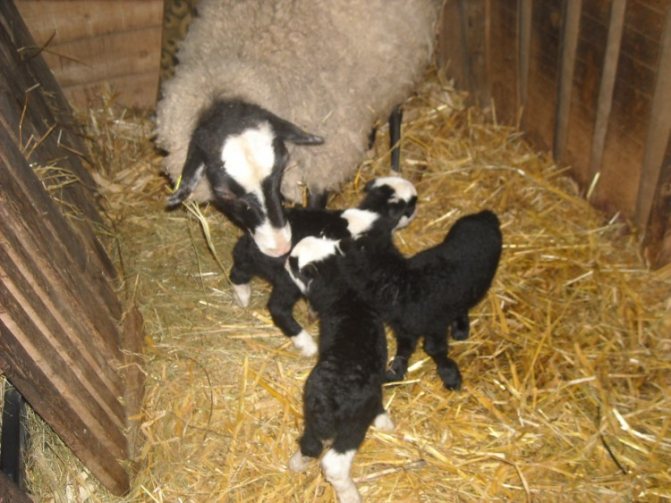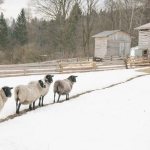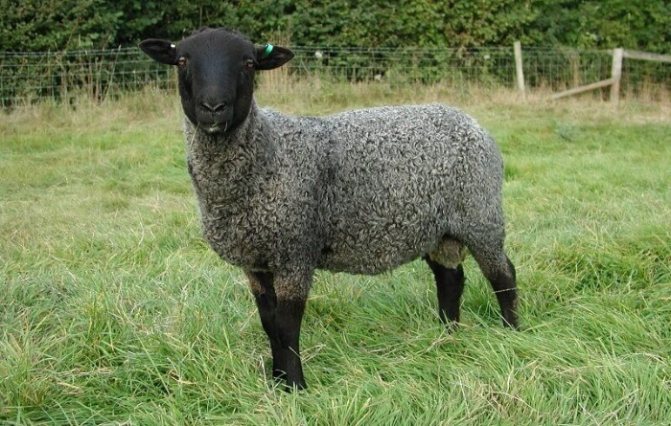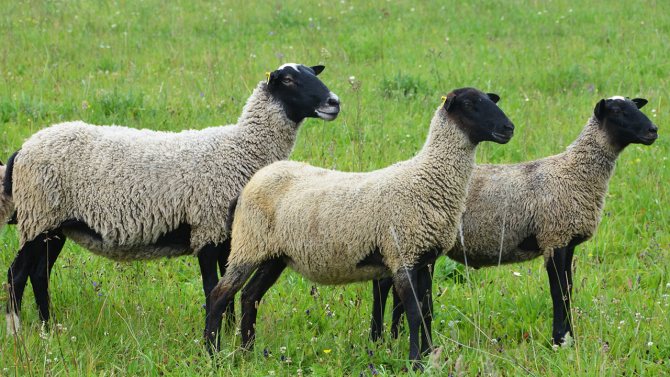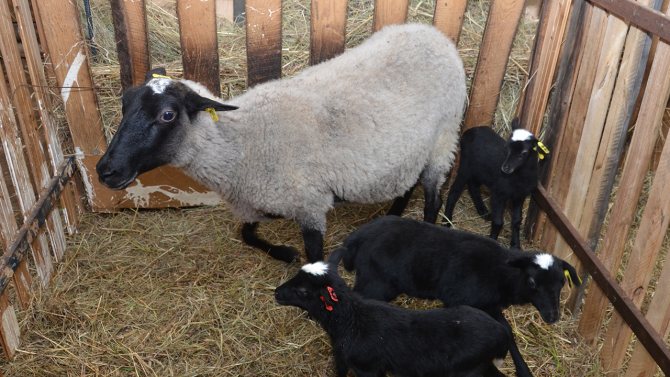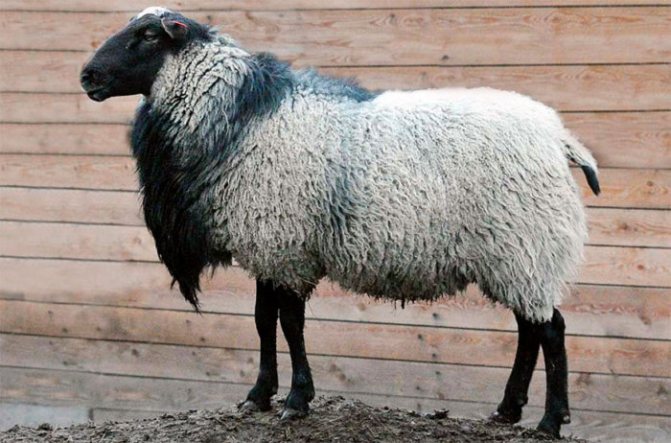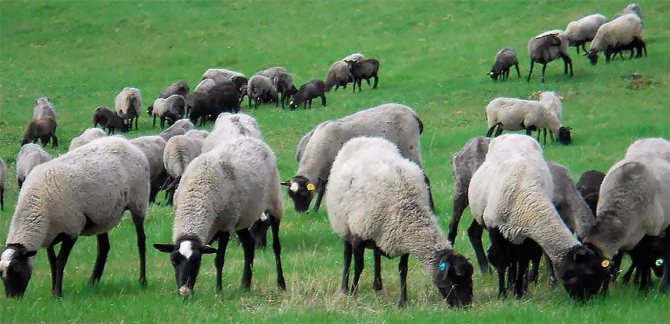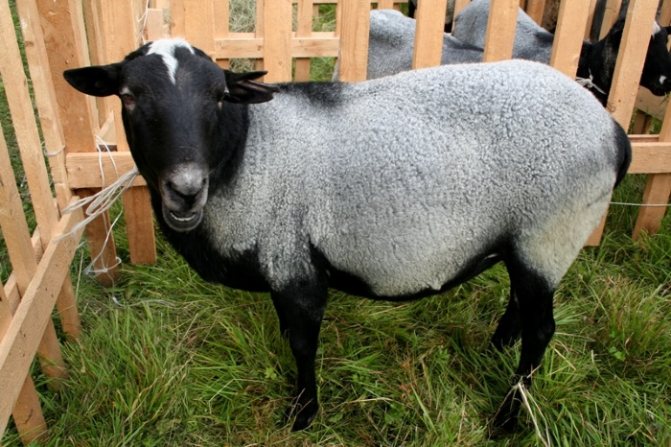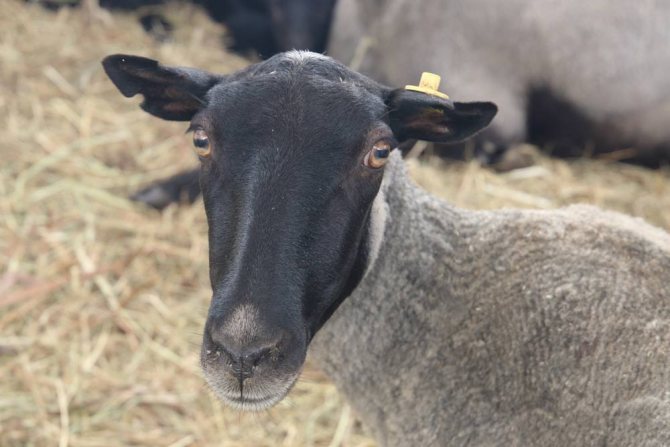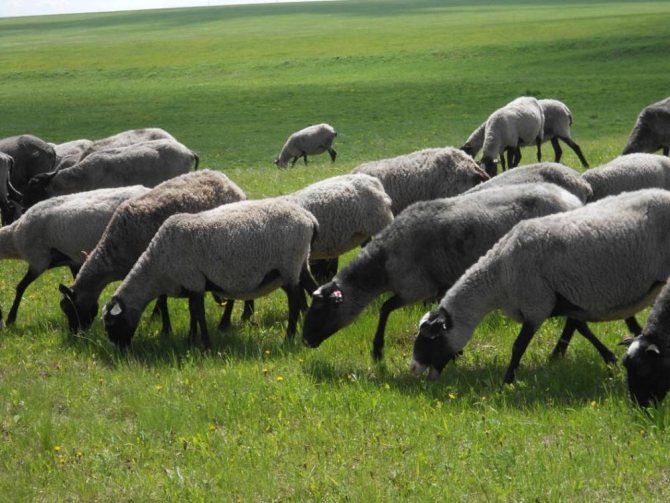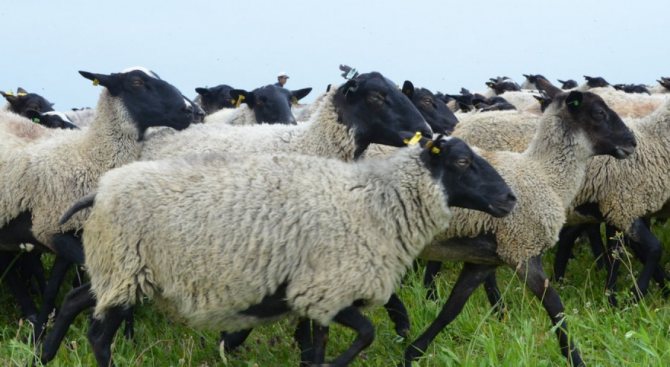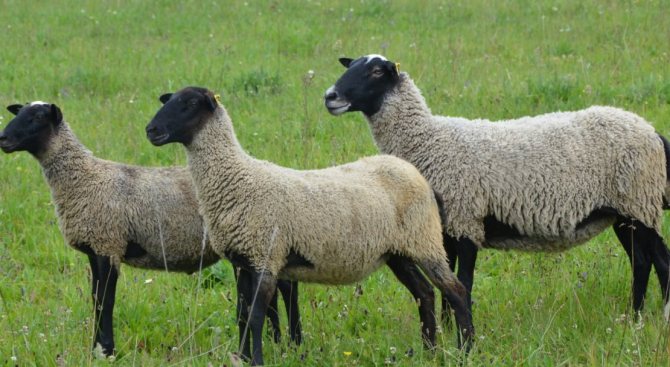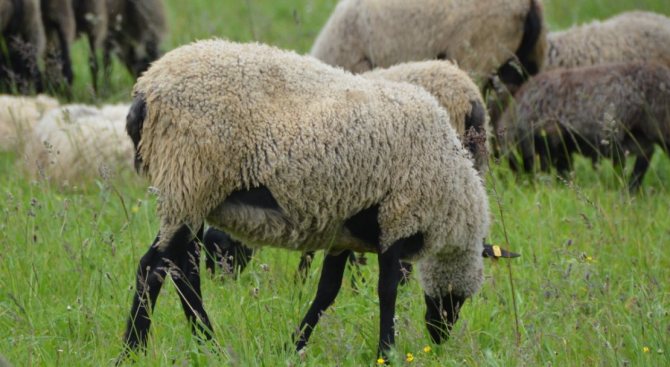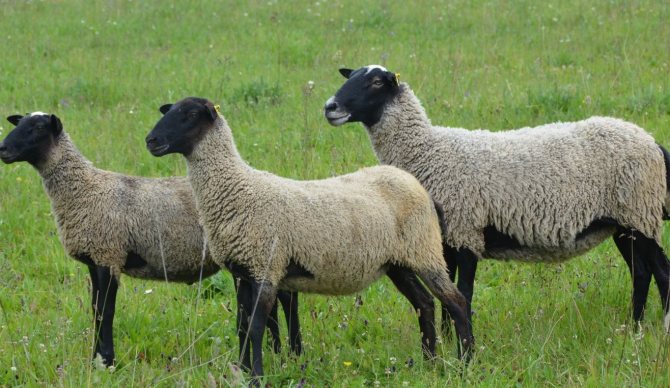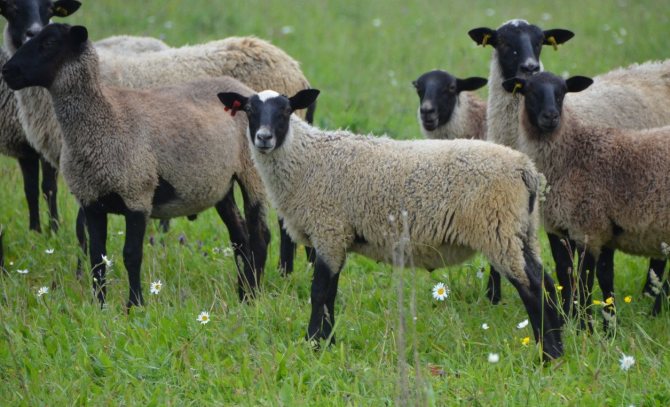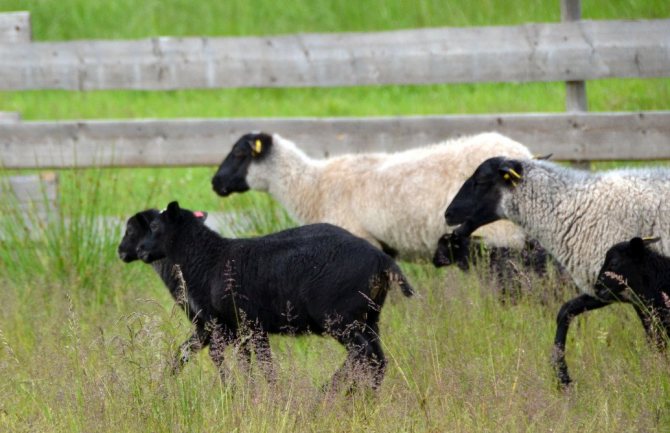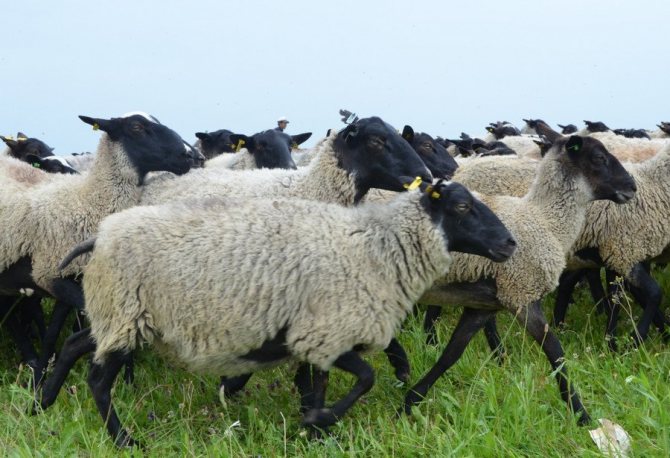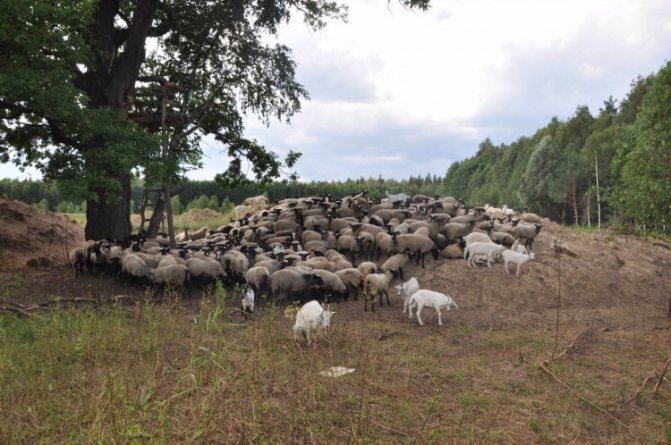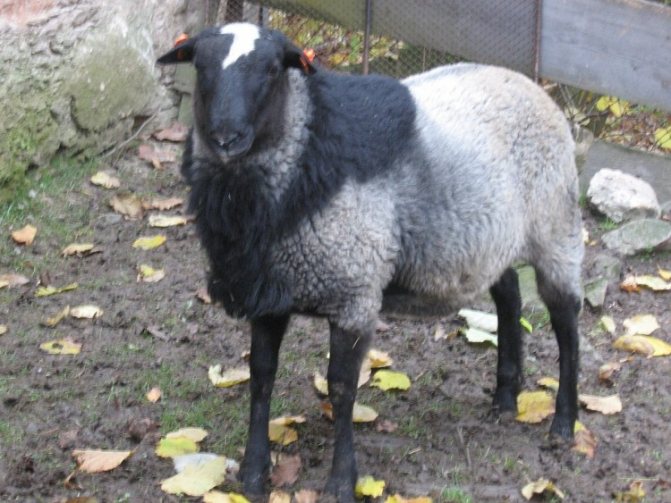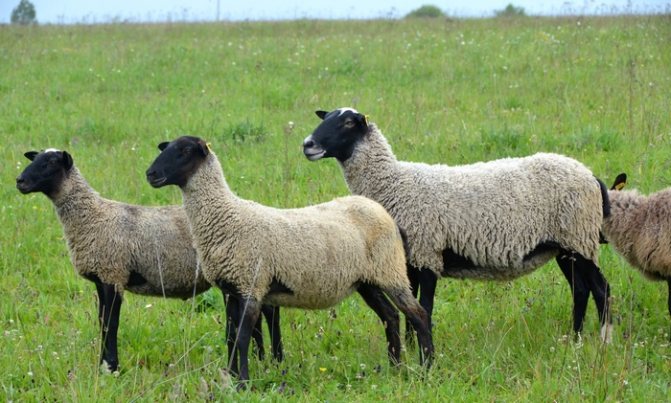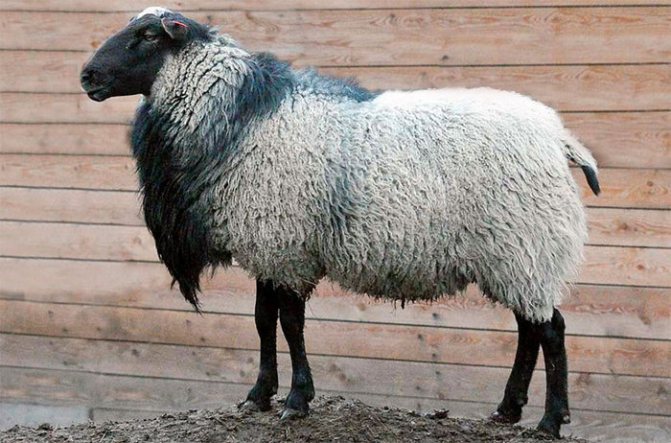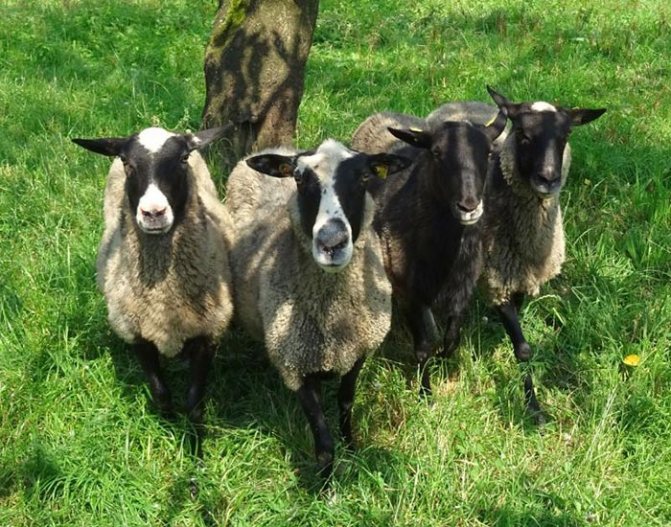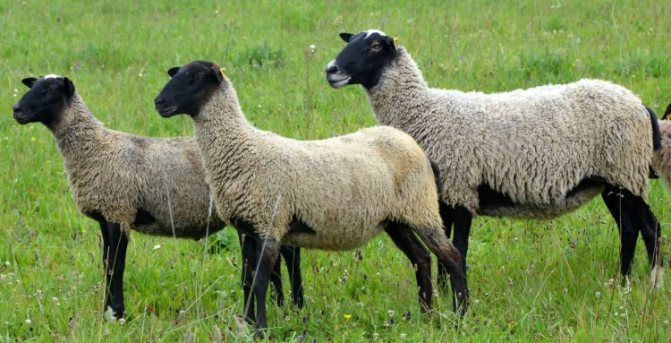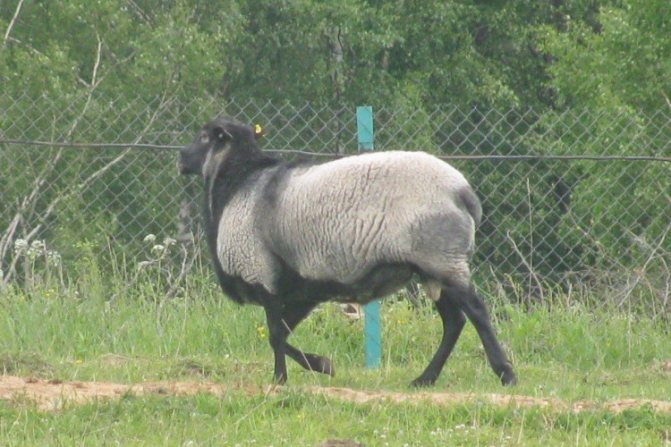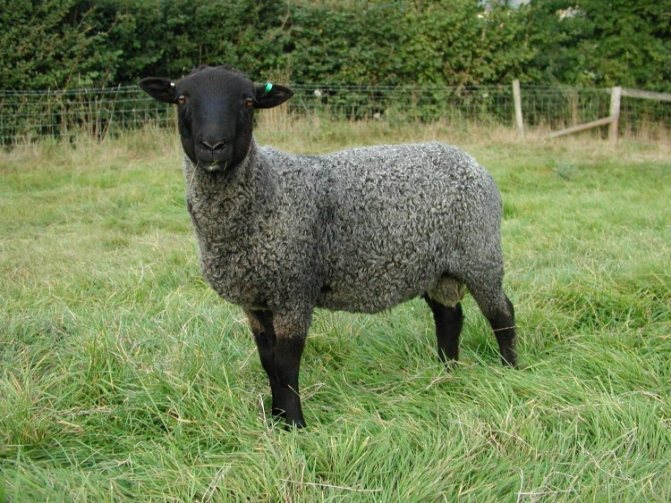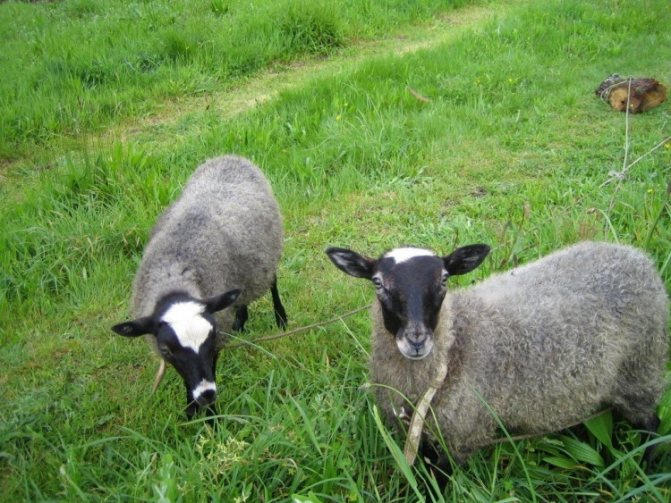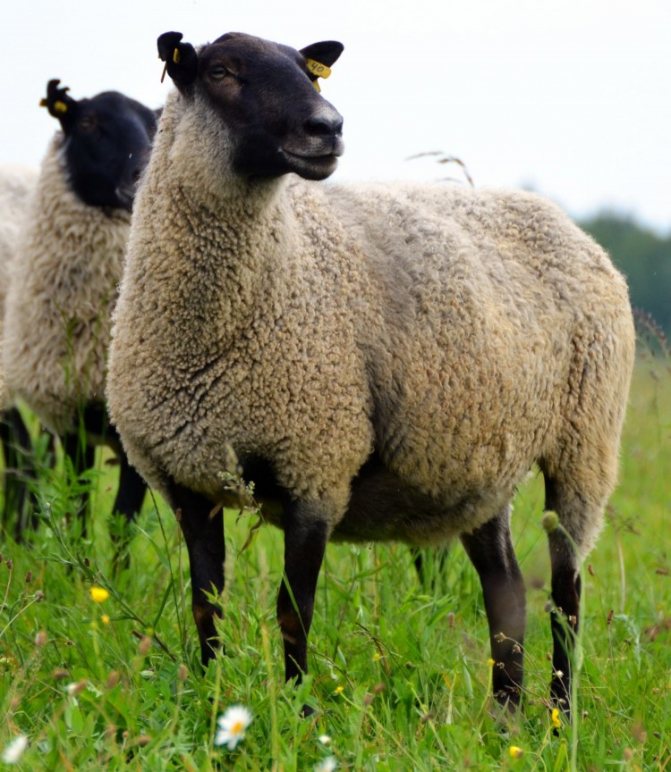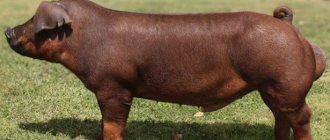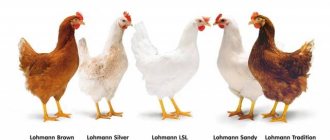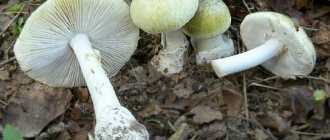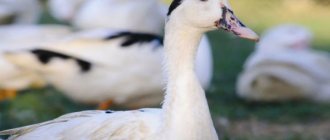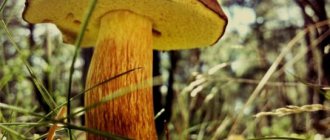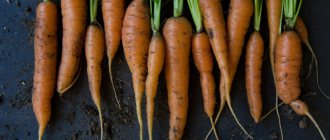Livestock »Sheep
0
1486
Article rating
Sheep breeding from time immemorial has been considered a profitable enterprise, however, it is impossible to call this occupation simple even with a stretch. Despite the difficulties, many still choose this type of activity as a way to earn money and achieve good results at the same time. The fact is that this type of animal husbandry is different in that animals quickly gain weight and grow. Among the advantages, one can also note a low mortality rate. Sheep meat is incredibly tasty, the same goes for milk.
Characteristics of sheep of the Romanov breed
When starting a business with sheep, many people think about which breed they will choose. Experienced breeders note such a variety as the Romanov breed of sheep. On the territory of Russia and the countries of the former USSR, it is the Romanov breed of sheep that is in first place in the ranking of relatives. Next, we will find out what the advantages of this breed are.
The history of the emergence of the breed
Romanovka was obtained in the distant 18th century through long-term selection work. The goals that the breeders faced were as follows:
- unpretentiousness;
- fertility;
- fast weight gain.
Everything conceived came true, because the breed is valued precisely for these qualities. It is important to mention that this achievement in the field of animal husbandry belongs to domestic zootechnicians, because all breeding work was carried out on the territory of Russia, in the Yaroslavl region. The cattle breeders liked the new breed so much that in the first years after the breeding of the Romanov sheep one could find almost in any corner of the world, from North America to Tatarstan, Kazakhstan and Bashkiria.
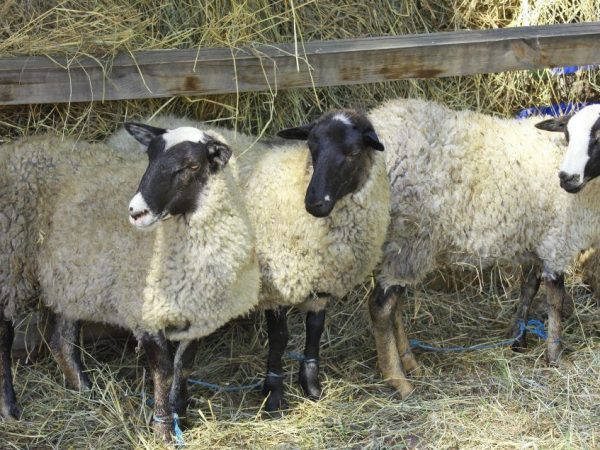
The emergence of the Romanov breed
Animals of this breed are usually referred to as a mixed direction. This means that a sheep can produce not only meat after slaughter, but also excellent high quality wool throughout its life. As mentioned earlier, the most important feature of the described breed is that sheep are able to take root in almost any climate. This is especially true for Russia, where the difference between the temperature in summer and winter can be more than 50 ° C.
Benefits
Speaking about the Romanov breed, I would like to once again emphasize all the advantages, because of which you should opt for it:
- high quality wool;
- tender tasty meat with maximum yield;
- excellent adaptability to environmental conditions;
- unpretentiousness in care and feeding.
Currently, the breed is bought not only for growing and breeding in its pure form, but also to improve the qualities and descriptions of other breeds when crossed with Romanovka, in order to prevent a cross.
Is it profitable to keep Romanov sheep
As mentioned earlier, the Romanov breed sheep are beneficial for breeding and keeping. Sheep of the Romanov breed are just as popular. Animals gain weight rapidly, even with the most meager nutrition. So, if the nutrition of a lamb consists of half a kilogram of grain and only 1 kilogram of hay, after 6 months it will weigh more than 50. When slaughtered at this age, the waste part of the carcass is no more than 50%. It is recommended to slaughter sheep exactly at the moment when they weigh 50 kg, usually around the age of 8 months.
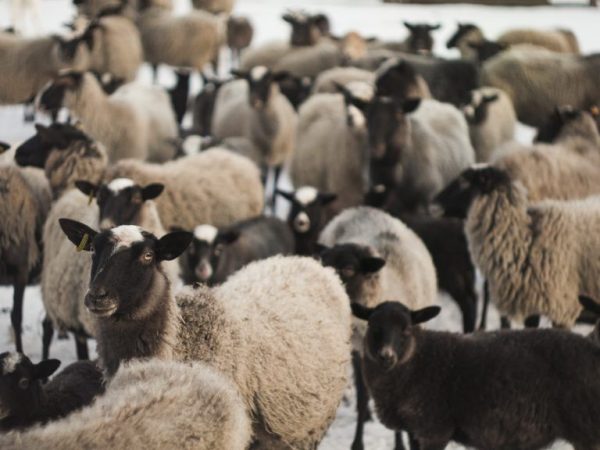

Maintenance of sheep of the Romanov breed
Despite the fact that sheep and rams are bred for meat, do not forget that there are other livestock products that can be obtained from it. In addition to meat, you can sell wool, milk, leather. On average, about 3 kg of excellent fleece are obtained from one Romanov sheep, which is a worthy indicator among other breeds.
How many times should a sheep be sheared? Shearing of these animals should take place at least 3 times a year, and this must be done strictly before the molting period begins. Many livestock breeders are trying to develop their business further and begin to make products from sheepskin and wool on their own, this brings additional income, allows you to quickly complete the business plan.
Stable diet
The basis of the winter nutritional diet of these animals is roughage - hay, brooms and straw.
However, it is necessary to diversify it with juicy forages in the form of silage or chopped root crops. It is also worth giving compound feed and other mineral and vitamin supplements (especially to young animals and ewes during lactation). Concentrates should be given after watering, and juicy feeds should be alternated with coarse ones. The diet should also contain salt, vitamins, and mineral supplements (such as bone meal or chalk).
In a year, one sheep needs three kilos of salt and two kilograms of bone meal or crushed chalk. Hay is best given wormwood, cereal, legume, or clover. In no case should rump or sedge be given (animals may die), as well as forest grasses (horsetails) and plants with a rough stem (reeds). Young animals can be fed with wheat bran, pea or other bean flour. So that during the transition from pasture to stall keeping the animals do not lose weight dramatically, they are first fed with high quality roughage.
For feeding on straw, brooms and other lower-quality types of feed, Romanov sheep should be gradually transferred. The most high-quality and nutritious types of food should be reserved for the second half of the cold period, at the time of mass lambing of pregnant ewes.
During the hunting season, it is better to feed the sheep well, for example, with high-quality hay, herbs and succulent feed. If we add 300 grams of grain feed and 1 kilogram of good hay to the main daily ration, then in six months the young born will gain up to 50 kilograms of live weight. In a year, the animal already weighs 80 kilograms, and it can be taken for slaughter.
More on the topic: The main characteristics of the Dorper sheep breed
Igor Nikolaev
auto RU
The average daily weight gain of one individual with proper nutrition ranges from 140 to 170 grams.
Features of purebred Romanovs
Romanovsky sheep and Romanovsky sheep differ not only in performance characteristics, but also in external features. This variety belongs to quite large, such lambs have a short tail and gray hair. Flakiness does not belong to the characteristics of the breed, horns can be present on the head of both the male and the female.
It is customary to divide animals according to the line of skeletal development:
- strong;
- rude;
- tender.
The first group of animals with a strong skeleton combines sheep and rams, symmetrically folded, with a well-built skeleton, suggesting the presence of a wide chest. Such animals have thick hair, soft to the touch. The difference is in the color of the wool: in this subgroup it has a dark graphite color. Many people confuse such Romanovka with Altai or Stavropol sheep.
Romanovs with coarse bones are characterized by coarse wool to the touch. Males differ from their counterparts in that their mane is thicker and has several shades.Despite this, according to the criterion of wool quality, this group is inferior to the previous one, which cannot but affect the price of the product. If we compare productivity indicators, they will overlap with those that are attributed to the North Caucasian breed of sheep.
The third group of sheep with a delicate skeleton is the most unclaimed, flaws can be seen even with the naked eye. Such animals have a narrow skull shape, a narrowed rib cage and an underdeveloped sacrum. The wool of such a sheep looks different: it is painted in a snow-white color, this is the first thing that catches the eye when looking at a photo or video. It is worth saying that such a subspecies is in the least demand due to the fact that the quality of the fleece and meat is significantly deteriorating, as well.
general description
To describe the breed of Romanov sheep completely, one should dwell on the features of the exterior. The characteristics of the Romanov breed of sheep are as follows:
- weight of animals: female - up to 50 kg, male - up to 85 kg;
- fertility indicators: at one time the farm increases by 4-5 individuals.
In addition, there are so-called breed standards, the maintenance and breeding of Romanov breed sheep at home will be impossible without this knowledge obtained with the help of the scientist Pavel Kuleshov:
- the growth of the sheep should be medium, bends at the withers or rump are not allowed;
- the chest should look powerful, the limbs are symmetrical;
- the coat is densely located, the underpads should protrude slightly;
- coat color - from dark (black) to cream;
- down and wool in a high-quality fleece should be correlated in a ratio of 1 to 5;
- a different color of wool is allowed when it comes to young animals.
Features of the content
Does the breeding of Romanov sheep require special conditions? As has been said many times earlier, such animals do not require any special conditions of detention, since they are classified as unpretentious. This is largely due to the fact that the sheep have dense wool, which does not allow them to freeze in the cold and does not allow them to overheat in the summer heat. There are cases when Romanovskie sheep lived in Siberia, where the temperature is often below minus 15 ° C, while feeling quite comfortable. Despite this unpretentiousness, it is still recommended to create comfortable conditions for keeping and breeding Romanov sheep at home.
It is better to make the floor in a sheepfold from a tree, then place a loose bedding on it, which is made from straw or hay. Thus, the temperature regime, which will be optimal for the representatives of the Romanov sheep, ranges from 10 to 14 ° C.
It is worth taking care not only of the conditions in the sheepfold, but also to organize a place for walking. It's about pasture. In order for everything to be done correctly, you can use video and photos. Do not limit sheep grazing in winter, on the contrary, a walk in the frosty air will only increase productivity indicators.
As for the choice of a room for a sheepfold, you need to take the recommendations for planting density as a basis. So, the norm is about 3 square meters. m per individual. At the same time, it is important to ensure a normal air flow, that is, to establish a good ventilation system. Another important aspect of sheep breeding in general is to protect the premises from dampness: Romanov women do not tolerate dampness well, this can bring a lot of trouble and provoke illness.
Care rules
Since the peasant breeders tried to breed exactly the unpretentious breed, there are no special conditions for keeping. It is only necessary to properly feed the sheep and provide them with comfortable living conditions. It is not difficult to develop a business in this area, but it is important to remember:
- sheep do not tolerate table maintenance, it is necessary to organize grazing in the field;
- it is not recommended to keep animals at a temperature that goes beyond +/- 30 degrees;
- dry and thick bedding is required in winter.
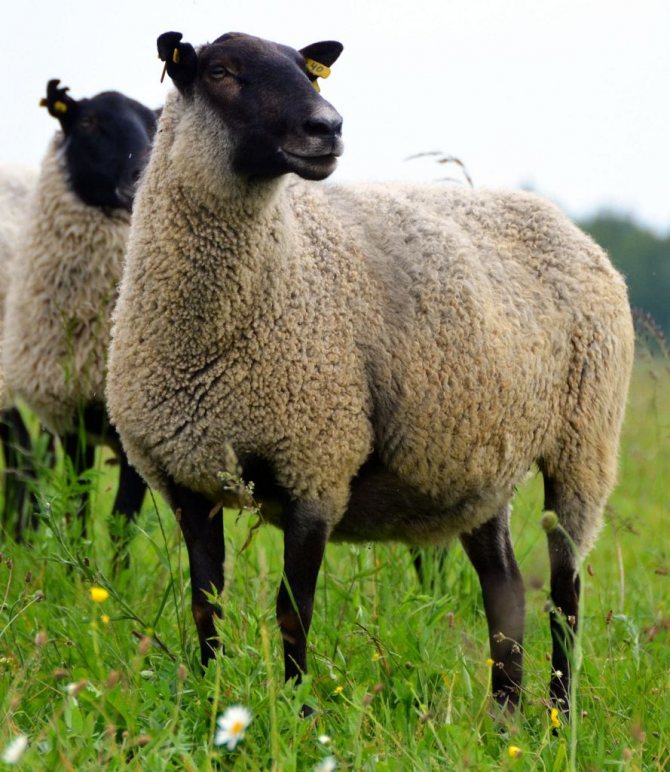

Self-grazing sheep
If these requirements are met, sheep can be raised effectively.
Important. Animals are poorly oriented in space, which is difficult during grazing. Therefore, together with them, several goats are driven out into the pasture, which have no problems with orientation on the terrain. A highly developed herd instinct makes it easy to direct the flock where the shepherd needs it.
There are also some requirements for the sheepfold:
- lack of drafts;
- the presence of a ventilation system;
- artificial lighting so that the working day is about 14 days.


Romanov sheep with lambs
It is important to remove manure in a timely manner, as it contains ammonia. Its high concentration can destroy the soft tissues of the legs of animals and negatively affect the quality of the coat. Depending on the number of heads in the flock, it is possible to remove the manure manually or automatically. In the latter case, it is required to create special compartments under the floor, into which special machines will shift the waste products of the sheep.
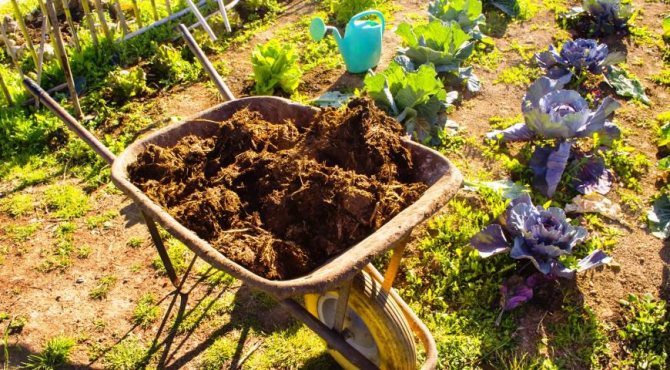

Sheep manure is used as fertilizer
Feeding
It is best to use natural meadows. These animals even eat low-quality grass that is not suitable for cattle. That is why sheep breeding is best developed in the south of Russia. If it is not possible to provide natural meadows, it is necessary to create artificial ones. To do this, create a field sown with cereals or legumes.
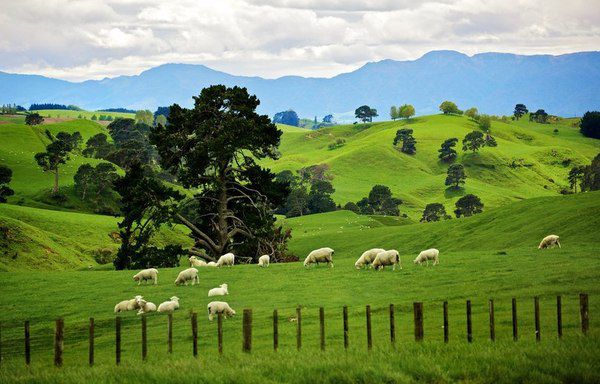

Sheep graze in the meadows
In winter, when it is cold outside, the sheep are transferred to a stall. It is necessary to provide the animals with comfortable living conditions so that they do not lose weight. They are given comprehensive nutrition:
- compound feed;
- vitamin supplements;
- hay;
- vegetables.


Preparations with vitamins for sheep
One adult requires approximately 2 kg of hay. Additionally, you can use barley, but it should serve as a food additive, since it makes sheep very fat. The fat layer negatively affects the quality of the meat.


Feeding the sheep
Pea flour and other legume residues can be used as a protein supplement. Youngsters require bran that is based on oats. Chalk, salt and bone meal are required for the wool to be of high quality.
It is recommended to give a damp mash once a day. However, it must be removed in time so that it does not sour. Otherwise, the sheep may suffer from eating disorders. At a room temperature of +20 degrees, the maximum time for finding the mash is 1.5 hours.
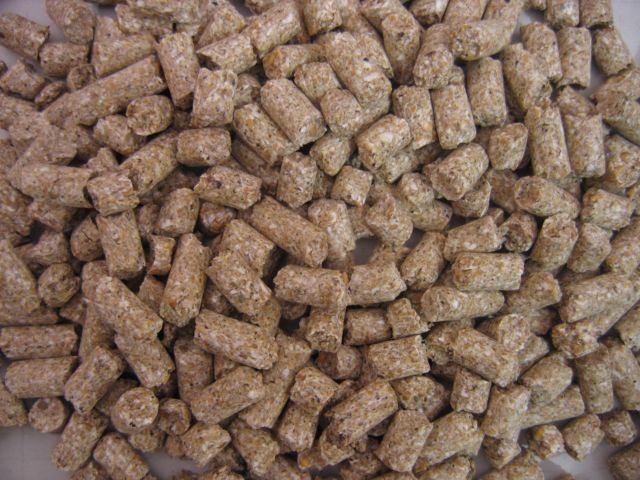

Sheep feed
Features of feeding newborns
Already in the first hours of life, the lamb must be given high-quality food in sufficient quantities. This will allow for quick weight gain. But for various reasons, the mother cannot give her milk to the newborn. Therefore, it is necessary to resort to artificial feeding.
It is important to give milk from a bottle. It should be preheated. When there is a sheep or goat in the flock that gives milk, this is great, but if it is not available, you can use cow's milk. It is important to give food to babies on time - every 2 hours. However, the gaps will gradually increase. On the eighth day, he can be given hay, barley and other additives.


Keeping lambs
Already from the 15th day, young animals can independently support themselves and eat pasture. On large livestock farms, young animals are weaned from females by 4 months. Some entrepreneurs do not let the newborn near the mother at all.
More information about feeding newborns can be found in the video.
Video - Artificial feeding of the lamb
The quality of feeding depends on how pronounced the beneficial properties of the lamb will be in adulthood.
Sheep pregnancy and birthing process
This breed is very prolific. In some cases, 4 - 5 lambs appear at once. The female is ready for reproduction as early as 4 months. Here's how it goes:
Table 2. Sheep pregnancy and childbirth
| Description | Photo |
| Selection and mating can be group and individual. In the first case, one ram fertilizes up to 20 sheep, in the second, only one female is provided to him. Individual mating is important when you need to look at the result of crossing and evaluate the male's capabilities as a producer. | |
| Waiting for the hunt among the bright ones. Comes within 5 days. At this time, the female is restless, and her genitals increase in size. To determine the hunt, you can use a probe ram. It is used for re-seeding and heat detection. | |
| Knitting. It is carried out in a natural way, when a ram is launched into a group of sheep, manually, when the process is closely monitored and artificial, which allows using the biological material of males most effectively. | |
| Pregnancy is shorter than that of other sheep breeds (approximately 145 days). A few days before giving birth, the pregnant sheep must be separated from the flock by placing it separately in a pre-prepared pen. A couple of days before giving birth, you need to shave off the hair on the hind legs and in the udder area. | |
| Childbirth, during which the animal constantly looks at its belly and begins to bleat. She often lies down on the ground, and then abruptly gets up from it. Assistance with lambing is not required if the animal is healthy, but sometimes the process of giving birth to a lamb is complicated. In this case, the person helps to pull the newborn out of the vagina. The umbilical cord should be cut with processed scissors. After 30 minutes, a new calf appears. Within 5 hours after giving birth, the afterbirth leaves. |
Babies in animals of this breed are small, problems, as a rule, do not arise during childbirth. Caring for babies is not required, as the maternal instinct is well developed in sheep.
Important. If the mother, for some reason, did not lick her cub and did not start feeding it, then it is necessary to put it under another female who has just given birth. But in advance, you need to grease it with milk so that there is no rejection from it. Also, this method is relevant if more than 6 lambs are born at the same time.
Organization of feeding representatives of this breed
It is important to treat feeding responsibly, because the sheep's health and, accordingly, performance indicators in the future will depend on how balanced the sheep eats. Food should be rich in vitamins and minerals, be moderately high in calories and, of course, fresh. Feeding should be done strictly according to the schedule.
If it is possible to establish proper feeding, the appearance of the pet's coat will significantly improve, as well as its density will increase. It is worth mentioning that when cutting, the carcasses of those sheep that were fed correctly, without saving on this cost item, are in great demand.
When drawing up a diet, it is necessary to take into account which direction the animal belongs to: meat, dairy or wool. Also, when organizing a diet, you need to take into account the seasonality. So, in the summer, the Romanov sheep should receive the maximum amount of fresh green feed, in the winter, they should be replaced with dry ones. Let's talk about how seasonality affects the organization of sheep feeding in more detail.
Nutrition of Romanovoks in the summer
Sheep of the Romanov breed are classified as grazing. Their productivity will largely depend on what is growing in the pasture. It is the grazing season that is the ideal time to saturate the animal's body with vitamins and microelements to the maximum for the entire calendar year.
It is quite natural that grass and greens are the usual food for Romanovki, however, you need to switch to it gradually, without making drastic changes. It is important to enter it carefully, interfering with the usual feed.
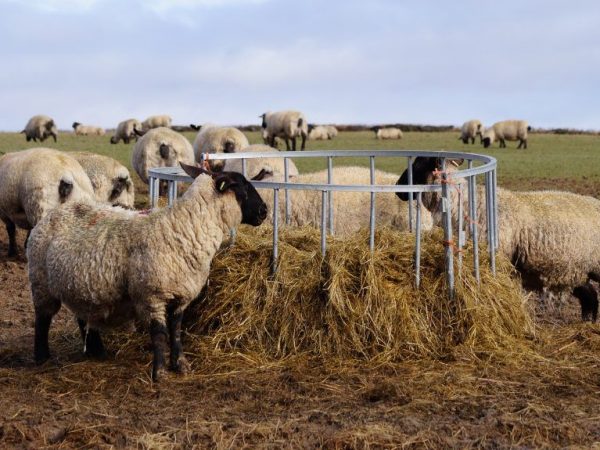

Nutrition of sheep of the Romanov breed
In the period from March until the first frosts appear on the soil, artificial pastures can be used. Usually they are filled with legumes, and perennial grasses grow on them, which sheep eat with great pleasure. When choosing an area for pasture, it is important to avoid excessively swampy areas, it is better to choose those places that are at least partially in the shade. This is extremely important, because Romanovskie sheep can be on pastures for a long time, almost all daylight hours. In the meadow, animals must have constant access to water; for these purposes, you can use the most ordinary river or even rainwater.
Organization of caring for Romanov sheep in winter
In the cold season (autumn and winter), it is recommended to move the Romanov sheep to the sheepfold, where they will be protected from wind and cold. At this time, females are often engaged in feeding offspring, so they will need special nutrition, which must be nutritious and balanced without fail. In winter, you need to feed the sheep at least 2 times a day, and you should definitely add hay and grain crops to the diet.
The first meal is recommended to be composed of cereals, which need to be supplied with nutrient concentrates. These can be root tubers, silage or a variety of fruits. Later in the evening, the diet should consist of coarser ingredients, such as straw or hay. For one adult, you will need about 5 quintals of hay together with hay for the winter, as well as at least 10 kg of concentrate. If the farm has lactating females, fat-tailed, you need to enrich the food with mineral supplements. In addition, Romanov sheep will need salt and flour from ground bones. These are essential ingredients for normal functioning.
Feeding Tips
Given the peculiarity of the breed, animals need to be provided with spacious rooms with equipped free-standing feeders. If you pour food under your feet or feeders standing on the ground, the sheep will trample the food. These animals are not adapted to live in a stable. In private farms, sheep are released to graze, but farms for the warm seasons of the year organize artificial fenced pastures. Animals can graze until the first frost.


When the sheep are herded into the stalls, they must be transferred to juicy feed with the addition of food concentrates. Also, a variety of roughage should be present in the diet of sheep. This hay, oats, barley in small quantities. Since barley is abundant, it gives a rapid increase in body fat. Mineral feed is very important for young animals - growing sheep and ewes. The diet of sheep should be balanced and take into account generally accepted standards based on the age and weight of the sheep.
Considering the variety, quantity and quality of products that Romanov sheep give to farmers, these animals are financially justified in breeding.
Breeding features of this breed
In a relatively short time, the farm will grow by a large number of individuals. This makes the maintenance of the Romanov sheep profitable. How to determine if the Romanovskaya female is in a state of sexual heat? This period does not last indefinitely, it usually falls on the summer time, they try to postpone the mating also to this period. All this applies to this type of natural reproduction. But along with it, farmers often use an alternative method, which is called manual reproduction. It is used to be 100% sure of the purity of the breed. For tribal Romanovka, it is used quite often.
Achievement of sexual maturity in lambs occurs at about 5 months, but this age is still not suitable for mating, since the animal is still too young. Only those females whose weight exceeds 40 kg are suitable for fertilization.
One female can give birth about 3 times a year. The average gestation period is about 145 days. There are clearly marked precursors of childbirth, usually on the eve of this event, the female begins to howl loudly and tries to take a lying position, after which she reproduces the offspring.
How is the Romanovka childbirth going? This process usually goes without complications. This is due to the fact that the animal has a fairly wide pelvis, respectively, the lamb easily and quickly passes the birth canal. Lambs are born so independent that from the very first day they can easily move around and take care of themselves. However, if more than 4 lambs of the Romanov breed were born at one time, it is still worth intervening: the mother may simply not have enough physical strength to feed everyone.
Milk from Romanovka can be obtained neither more nor less, about 120 liters. These are the averages of the tribal representatives. The annual harvest of 300 liters of milk is considered to be a record one.
Breeding
The high fertility of animals, due to early maturation (3-4 months), makes breeding a profitable activity. Although experts recommend waiting up to a year, do not mate earlier.
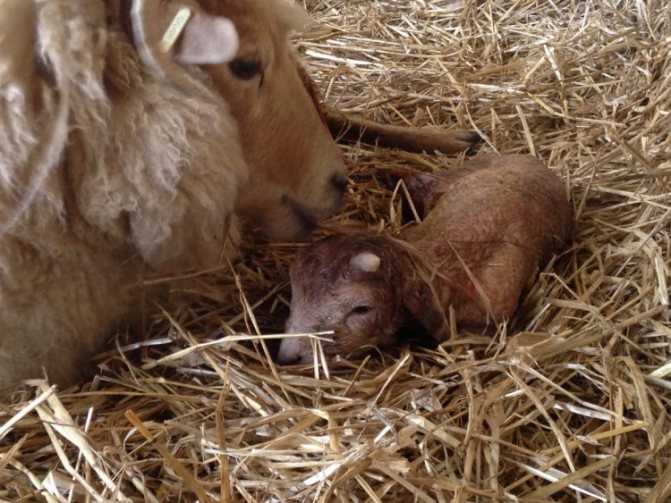

Pregnancy occurs in late summer, early autumn, and lasts 145 days. Romanov queens are capable of producing three lambing in two years. Each litter is a few cubs.
